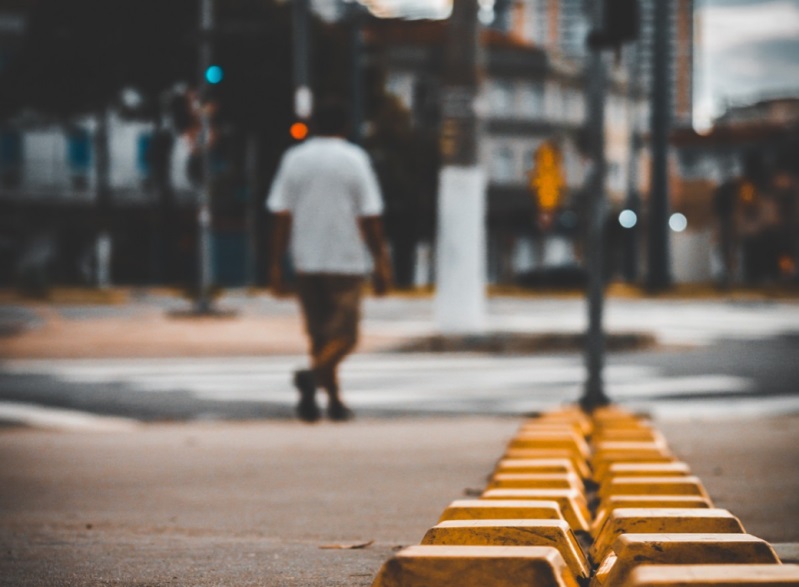Standard walkability metrics aren't factoring in all the reasons why residents can't or won't travel by foot, a new analysis suggests— and if cities truly want to be pedestrian-friendly, they need to think beyond the sidewalk, particularly in neighborhoods of color that face the steepest barriers.
In a new analysis of Washington, D.C. neighborhoods, researchers at the Urban Institute sought to model what a more comprehensive version of standard walkability "scores" might look like — and how it might vary depending on who's walking.
Private companies like WalkScore and federal tools such as the EPA's National Walkability Index have graded pedestrian-friendliness for years, but they've struggled to capture how safe, pleasant and comfortable streets actually are to travel on foot. That's mostly because walkability algorithms tend to grade neighborhoods highly when they offer a lot of destinations within "walking distance," but don't closely scrutinize things like pedestrian crash rates, how long it takes to cross the road, the presence or absence of sidewalks, or even whether or not people you know, actually walk in a given neighborhood right now.
Worse, these tools assume that people of all backgrounds face the same barriers to active transportation — despite the massive body of research that shows they very clearly don't.
"We weren’t only interested in if people can walk to an area, but if they would like to walk," said Peace Gwam, one of the co-authors of the report.
Visit the Urban Institute for a more detailed interactive map and more detailed on how these neighborhoods were scored.
To get a clearer picture of real walkability of D.C. neighborhoods, Gwam and her colleagues looked to publicly available data and scored communities on five core criteria:
- "Access," or the relative proximity of essential destinations like grocery stores, jobs, schools, bus stops and more,
- "Environment," or the level of air quality, noise pollution, shade, greenery, and other natural and ambient features,
- "Infrastructure," or the quality of things like sidewalks and streetlights, as well as high rates of illegal trash dumping,
- "Policing," or the number and type of police stops, which can pose unique dangers to people of color, and
- "Safety," which the team defines as the frequency of crashes, high speed limits, and ultra-wide roads.
The team behind the study acknowledges that even that impressive dataset can't totally capture the challenges of walking in D.C.
The study focused on data that could be sourced from public sources in hopes that other cities could easily replicate their work, but the researchers were forced to leave out certain critical and under-studied walking barriers, like rates of gender-based street harassment, accessibility for people with disabilities, and flood patterns in communities with poor drainage.
They also couldn't capture the nuances of what "walkable" means for unique groups with unique needs. Access to employment, for instance, may not be a critical ingredient of a walkable neighborhood for remote workers, while other residents may struggle to actually get hired for the job around the corner because they couldn't access a degree; a nearby hospital, meanwhile, might not offer medical care that its neighbors can actually afford, or it might not offer the kinds of care that most of them rely on most.
Still, the researchers say that's all the more reason for city leaders to expand the kinds of data they collect on mobility barriers among various groups — and to think just as broadly about how improving one metric, like the prevalence of "self-enforcing" street designs, could possibly improve other metrics, like decreasing the number of police stops.
"One score and one metric does not tell the full story," said Eleanor Noble, who co-authored the study. "A neighborhood could have great infrastructure, but still be really bad to walk through in terms of shade, heat, noise pollution, air pollution, or policing."
With historic (if still imperfectly structured) funding for walkability and street safety coming down the pike in the Bipartisan Infrastructure Law, Noble says there's no better time than now to "prioritize racial equity in our walkability plans."
And failing to do it will almost certainly hold back communities' other policy goals.
"In the context of rising gas prices and climate change, it’s so important to encourage people to use other modes of transportation besides driving," added Gwam. "Making sure that walking is a truly viable option throughout the community is critical right now."







